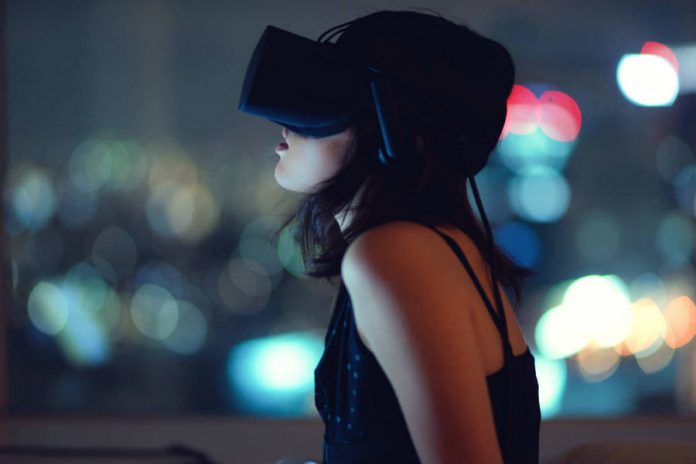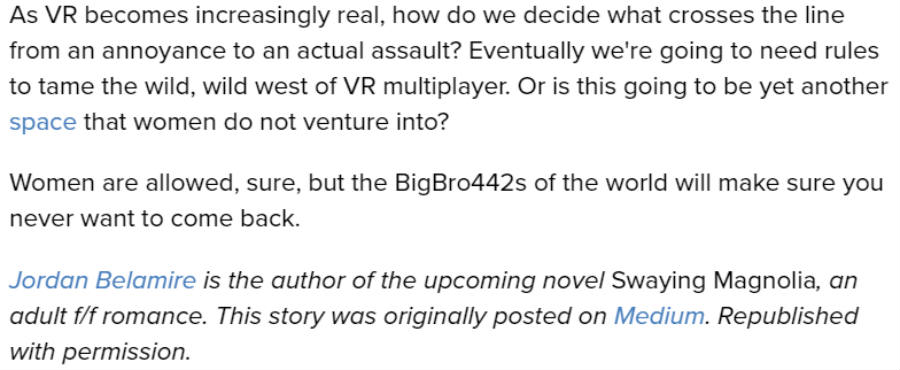
A player in the VR game QuiVr reported an incident of sexual harassment last week. Days later, the developers of the game responded with the development of a ‘power gesture’ feature that disables user interaction in virtual environments.
The story of Jordan Belamire made waves online for bringing to light the issue of sexual harassment in virtual reality games. The article originally appeared on Medium quickly and got a lot of comments. The admins of the website took the post down.
However, a second retelling, also penned by Belamire, is available at Mic.com. The main developers of QuiVr Aaron Stanton and Jonathan Schenker replied to the post with a lengthy piece published on the UploadVR portal.

Jordan Belamire’s VR sexual harassment story
Earlier this month, Jordan Belamire and her husband visited her brother-in-law in Redwood City for a weekend. There, they played with the HTC Vive, one of the most popular VR systems currently available.
The Vive can be quite intimidating for some players with its sophisticated setup, but Belamire decided to try it nonetheless. She put on the HTC headset, grabbed the controllers, and immersed in the world of a game called QuiVr.
QuiVr is an ‘Archery Castle Defense game’ exclusive for the HTC Vive, and it is currently in Alpha testing. Players in QuiVr can play solo or with friends using their trusty bow and arrows to defeat monsters that threaten a medieval fortress.
Jordan Belamire was initially in awe at the game’s mechanics and realism, but then she decided to try out multiplayer mode. Only a few minutes passed before an offensive player named BigBro442 groped her character after hearing her female voice.
Initially, she laughed at the shock of the encounter, but then she repeatedly told the player to stop. BigBro442 did not stop, so she took off the headset and stopped playing altogether.
‘Power Gesture’ or Safe Space? The future of VR interactions
It took less than a day for the developers of QuiVr to hear about the story. When Aaron Stanton called Jonathan Schenker to let him know of the article and what had happened in their game, the developer was already working on a potential solution for the issue.
Stanton and Schenker had already coded a ‘Personal Bubble’ feature with the intention of just unblocking players’ views from other players that could pose potential obstacles.
Schenker’s idea was to take this to the next level making it not only a default setting but also an in-game mechanism triggered by player’s gestures. They ran this idea through the gaming community, and their feedback was overwhelmingly positive.
“Non-VR players really liked the idea of the Power Gesture – a pro-active motion that you knew going into the game could call up defenses if you needed out. Yes, you can always simply take off your HMD, but that is just fleeing the environment. It doesn’t solve anything,” wrote Stanton and Schenker.
They have since introduced the enhanced ‘Personal Bubble’ feature enabled by ‘power gestures’ in the QuiVr.
The developers have also made the code available on VR Toolkit for others to adopt in hopes the industry looks for ways to solve the problem of bullying and harassment in VR games.
Source: UploadVR










